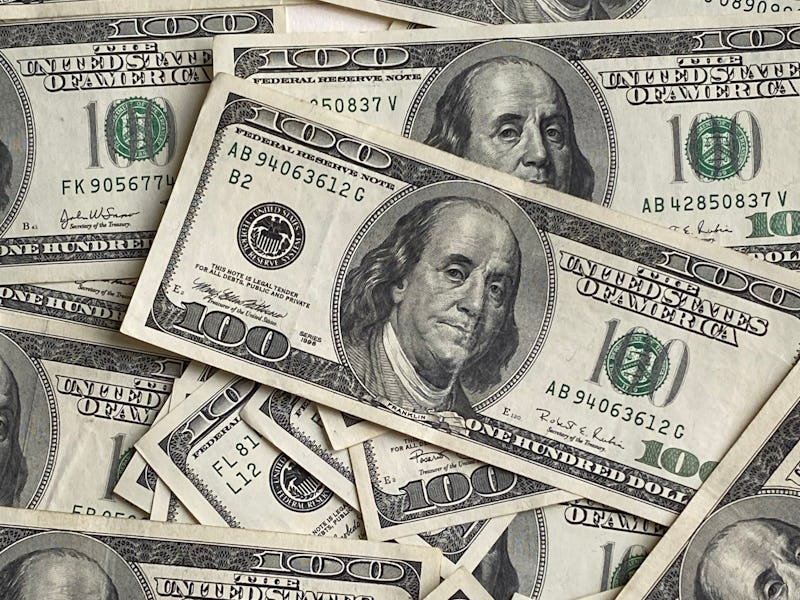Many Millennials Have the One Personality Trait Linked to Getting Rich
"That's definitely something that you hear said a lot."

In the 60s, researchers at Stanford University used a marshmallow to determine whether kids would achieve future success with surprising accuracy. The results of the infamous Marshmallow Test sent a ripple effect though the word of social psychology. Now, a new study in Frontiers in Psychology puts a new spin on the old experiment, using machine learning to pinpoint the traits that predict which people will someday be rich. The results offer surprisingly positive news for millennials.
In the original experiment, researchers left children in a room with a lone marshmallow and a promise: If they could resist the temptation to eat the marshmallow after the experimenter left the room, they’d receive a second marshmallow at the end of the experiment. Years later, the kids who were able to resist the marshmallow long enough to get the second one (now called “delay discounting”) had higher SAT scores and lower BMIs. The researchers concluded that the ability to delay gratification was key to future success.
As the new study shows, the results of the marshmallow test hold up under 21st-century machine learning analysis, says lead author William Hampton Ph.D., formerly of Temple University but now a post-doc at the University of St. Gallen in Switzerland. But, as he explains to Inverse, the new analysis shows that predicting financial success is far more complicated than the original experiment showed.
“With the marshmallow test, they’re saying here’s this trait, it’s predictive. And then over the years, other people have examined what other factors might be important,” he tells Inverse. “It wasn’t clear from the research whether gender was more important or ethnicity or education. The algorithm takes all the features in, and it ranks them.”
In his analysis, Hampton had a diverse sample of more than 2,500 American participants complete a delay discounting task online and collected a variety of other demographic information about them, including income. Running his analysis on the data to determine the best predictor of income, he found that delay discounting beat out age, ethnicity, and height as the best predictor. The top predictors, however, were education and occupational choice.
One of the major reasons for the discrepancy between Hampton’s findings and those of the original experiment is that the original had a major design flaw. In the original marshmallow test, all 50 participants were born to families capable of sending their children to a Stanford-sponsored daycare. Follow-up work has since shown that the predictive power of delay discounting is blunted when you control for societal inequality. In other words, it’s easier to delay a meal when you know for sure when you’ll be getting another one.
A ranking of the traits that were most correlated with income in Hampton's analysis
Hampton’s work elegantly weighs the importance of the other variables that contribute to high income against one another. His findings show that delay discounting is important, but it’s not quite as important as previous experiments may lead us to believe.
How Do We Stack Up Now?
Today, Hampton’s algorithm echoes the Marshmallow Test’s findings on a much larger scale, underscoring the importance of delay discounting using machine learning. What’s less clear, however, is whether we’ve actually gotten any better at delayed discounting over the years. Among the many criticisms of millennials is that they’re spoiled by instant gratification, but Hampton thinks it’s too early to jump to conclusions about them or their future financial success.
In a study published this year in Developmental Psychology, a review of recreations of the Marshmallow Test from the 80s (on the edge of millennial birth years) and again in the aughts showed that kids who took the test in 1980 were able to resist the marshmallow for one minute longer, on average, than the original participants. Those who took the test in 2000 lasted an average of two minutes longer, suggesting younger millennials were getting better at delayed discounting.
Delay time has been increasing since the 1960s in subsequent recreations of the marshmallow test
Hampton says that generational trends in delay discounting are outside of the scope of this particular study, but his best guess echoes the results of this new experiment: Don’t believe the gripes against millennials claiming they’re incapable of delayed gratification.
“Really your question is, ‘Are young people today higher discounters than the young people of the past?’” he muses. “I don’t think that’s been well established yet. That’s definitely something that you hear said a lot.”
This is an area of active research, he adds, so things may change as more studies emerge that correct, as his study did, the glaring design flaw of the original Marshmallow Test. Those studies will include a forthcoming paper of his own that investigates the effects of phone use on delay discounting in millennials.
For his part, Hampton would like to see his analysis used on data from a non-American sample to see whether his findings can be replicated cross-culturally. But the correlation, for now, is clear: good things come to those who wait.